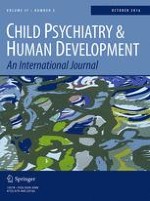30-10-2015 | Original Article
Typologies of Post-divorce Coparenting and Parental Well-Being, Parenting Quality and Children’s Psychological Adjustment
Gepubliceerd in: Child Psychiatry & Human Development | Uitgave 5/2016
Log in om toegang te krijgenAbstract
The aim of this study was to identify post-divorce coparenting profiles and examine whether these profiles differentiate between levels of parents’ well-being, parenting practices, and children’s psychological problems. Cluster analysis was conducted with Portuguese heterosexual divorced parents (N = 314) to yield distinct post-divorce coparenting patterns. Clusters were based on parents’ self-reported coparenting relationship assessed along four dimensions: agreement, exposure to conflict, undermining/support, and division of labor. A three cluster solution was found and replicated. Parents in the high-conflict coparenting group exhibited significantly lower life satisfaction, as well as significantly higher divorce-related negative affect and inconsistent parenting than parents in undermining and cooperative coparenting clusters. The cooperative coparenting group reported higher levels of positive family functioning and lower externalizing and internalizing problems in their children. These results suggested that a positive coparenting alliance may be a protective factor for individual and family outcomes after parental divorce.
